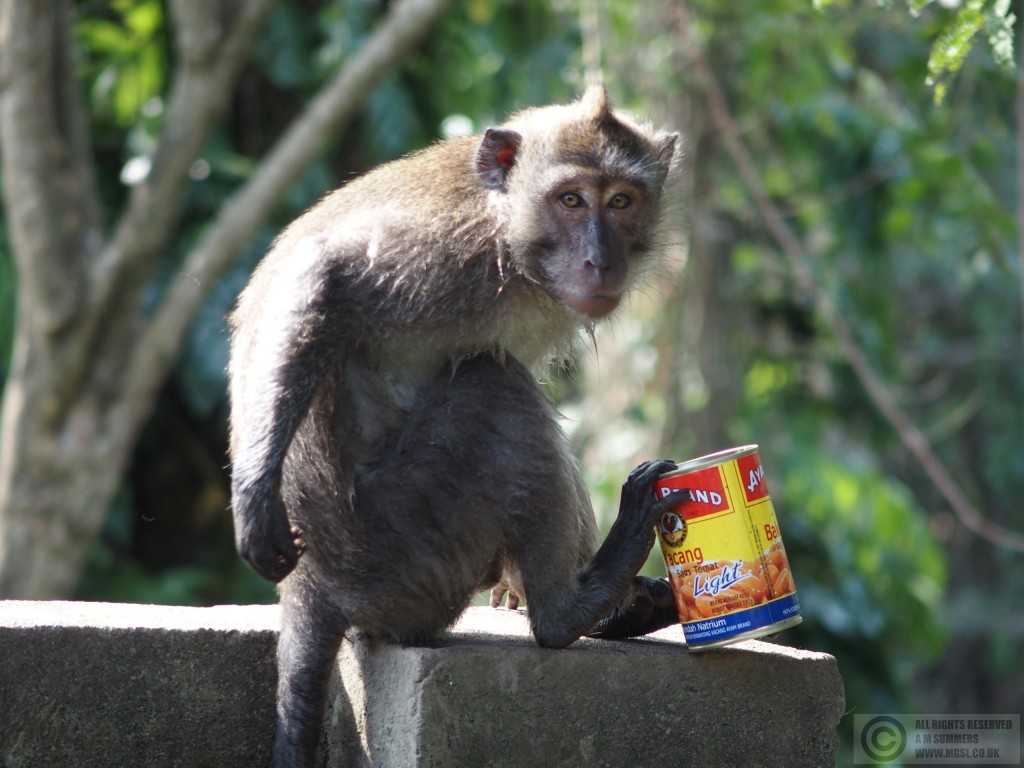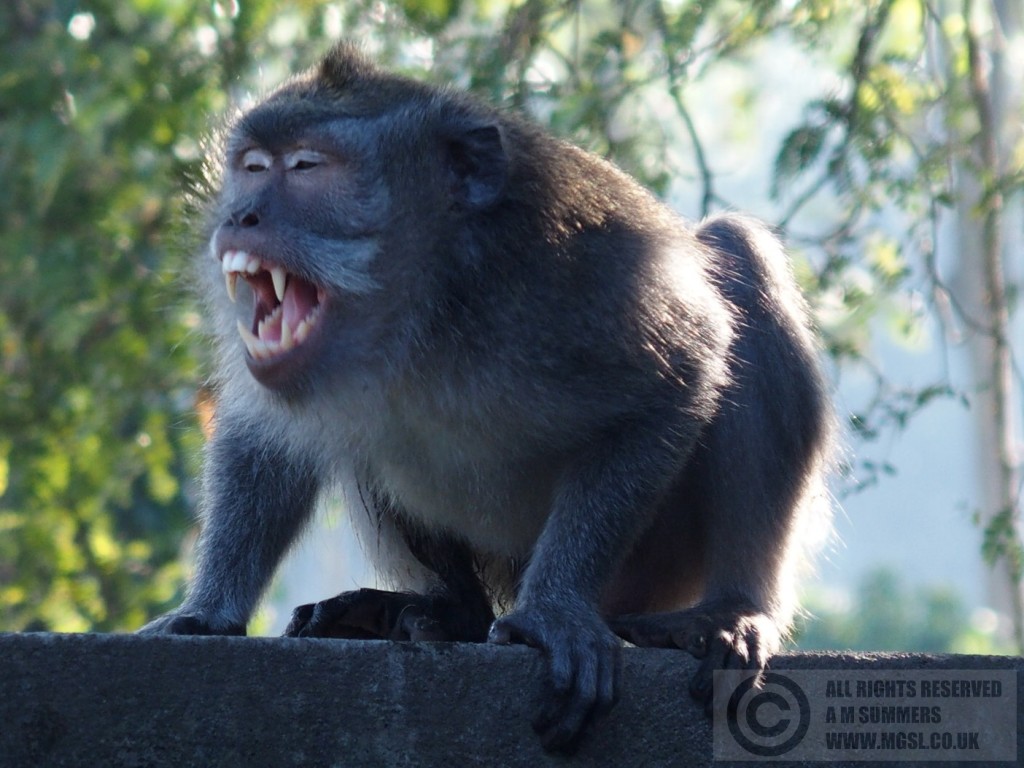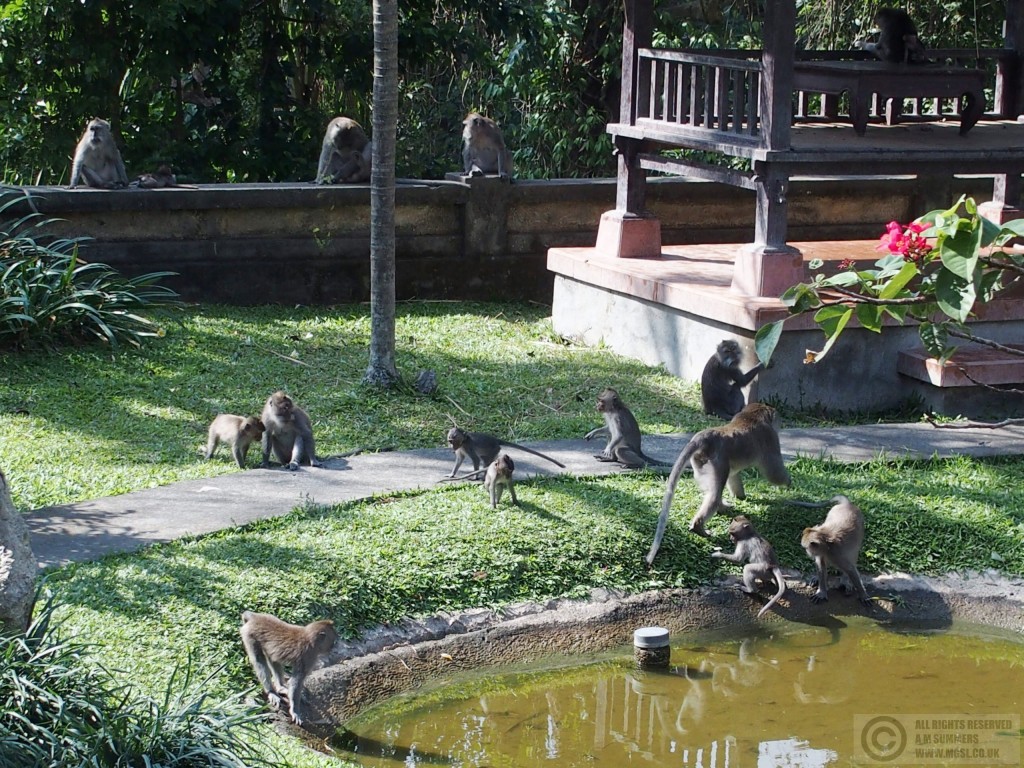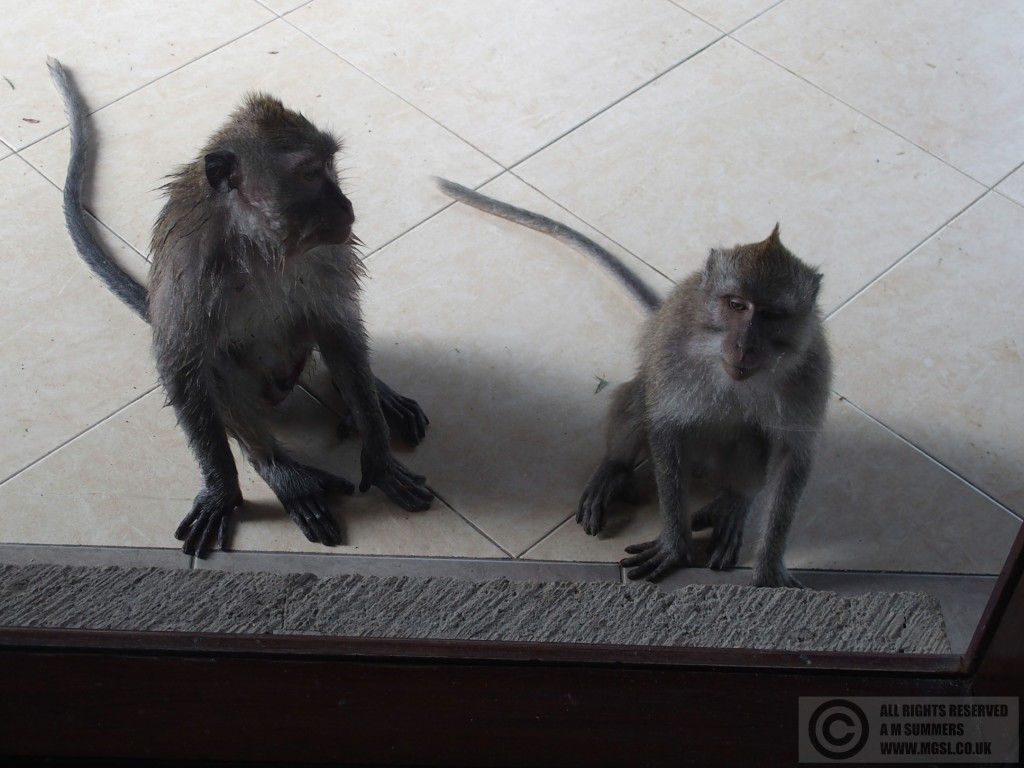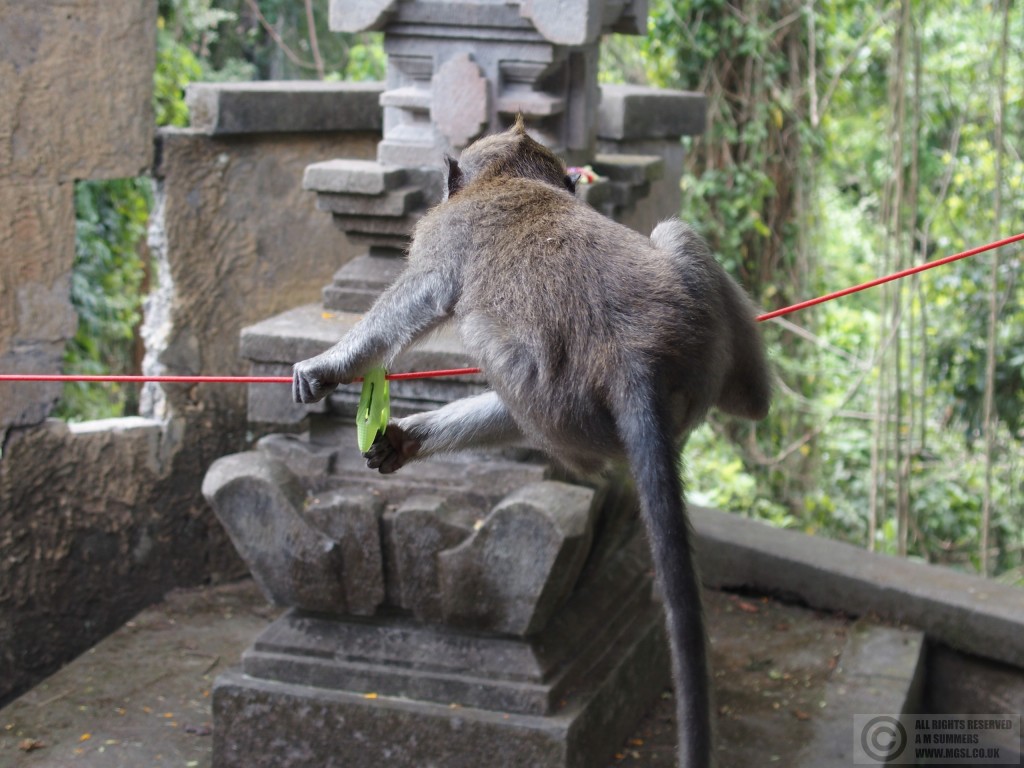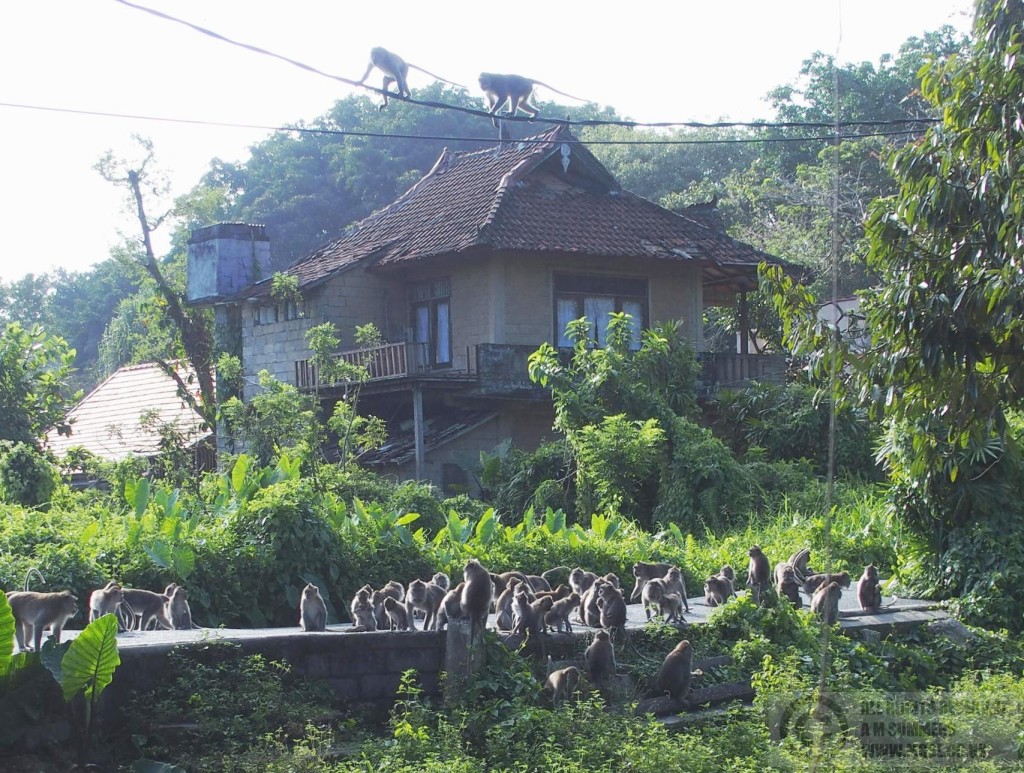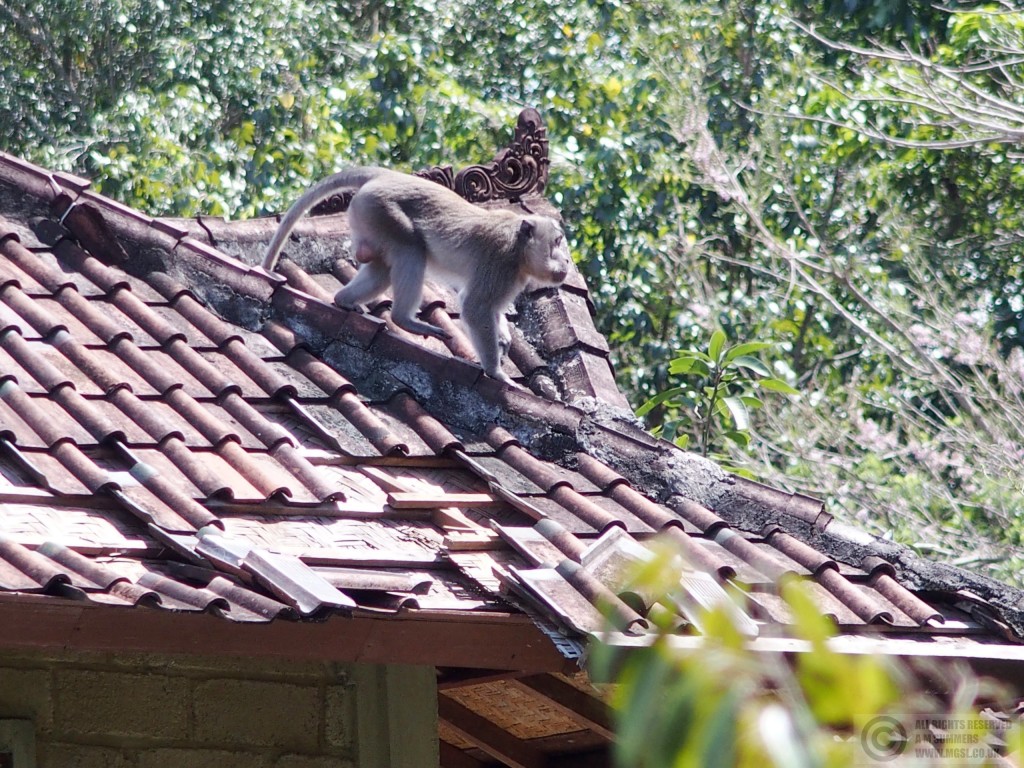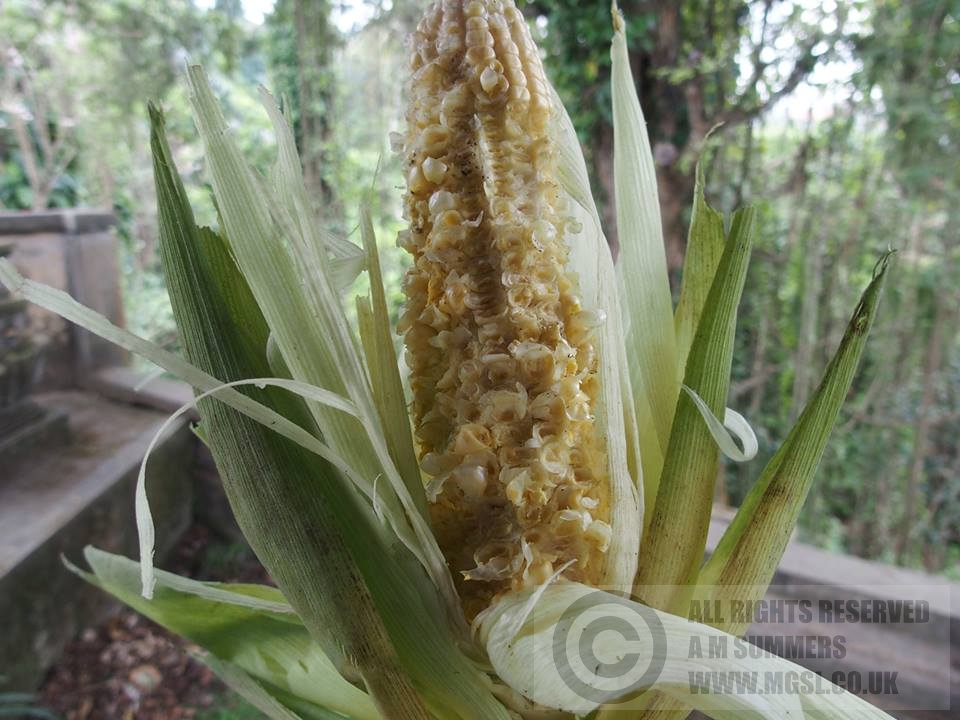I don’t claim to be any kind of expert on animal behaviour, but this was our experience of living in a monkey infested area just outside Ubud in Bali.
First off – if you are considering accommodation such as an Airbnb booking or a house rental, or even a purchase, and you discover that monkeys are frequent visitors, run. Run like the wind. Unless of course you happen to be writing a thesis on primate behaviour.
The person selling you the place may try to portray the monkeys’ presence as a plus point – “Look, you can watch the cute monkeys playing”. Here’s the thing – monkeys are not cute. Well OK, the babies are, but babies are invariably accompanied by very protective mothers who are convinced that you are part of some sinister baby monkey kidnap gang who will make off with their precious infant if they give you half a chance. Take a good look at a monkey, particularly one with its mouth open. See those yellowish white pointy things? Now imagine those pointy things sinking into your leg or arm. Mmm, excruciating pain AND the prospect of rabies shots in whatever passes for the local hospital – lovely!
Our Airbnb rental was in Nyuh Kuning, just south of the Monkey Forest in Ubud. A lovely quiet setting between a stream and some rice fields. Idyllic. Unfortunately nobody had told the monkeys (long tailed macaques in this case) that they were supposed to stay in the Monkey Forest. A lot of them do because, people pay to go there and feed them (why?!), but as a result they have bred prolifically and monkey politics dictate that some must feck off elsewhere during the day because it’s got too crowded. With Ubud town to the north of the forest and a new car park being built to the east that leaves only two directions for them to forage – and the stream by our house was their main corridor south.
It started just after first light, around 06:30. Monkey after monkey scampering across our roof tiles. They’re energetic little buggers at that time in the morning, so it wasn’t a simple one way passage – oh no, they pounded back and forth, back and forth, with some squabbling and screeching thrown in for good measure. So we’d get up and chase them off. At first we just let them do their thing – hang around the garden, drinking and playing in the pond, lolling around on the gazebo. Maybe 50 of them at a time. But then they got bolder and sat on our verandah instead. And tried to slide open the patio doors. And jumped against the bottom of them with such force that we feared they’d come off their runners. And tried to open a coconut kernel by smashing it against the window. Youngsters prowled around the window ledges looking for any small opening. I felt besieged. When one sat on the roof and started throwing tiles onto the ground we knew we had to act. It wasn’t our house, but we were the ones who would suffer first if there was a hole in the roof and it rained. So Operation Dominance began.
We discovered that the weapons of choice for locals were catapults and sticks. After all, if local residents take precautions against something it’s a good indication that you should too. There were sticks lying around the garden already and the gardener gave us a couple of catapults, just Y-shaped pieces of wood with orange rubber cords and a patch of leather. For ammunition we had fragments of broken roof tiles (an inexhaustible supply of them!). The advantage of these was that they were very light, so in the extremely unlikely event that we actually hit a monkey they wouldn’t cause injury.
We initiated a zero tolerance policy for our verandah and the wall just beyond it, firing off volleys of tile fragments in the general direction of any monkey that strayed into the area, and brandishing stout bamboo poles at them. Then we extended our protective zone as far as the pond and gazebo. Monkeys seem to understand about territory and it wasn’t long before they would run away to just beyond the gazebo. They were clearly familiar with catapults – most of the time it wasn’t even necessary to fire them, just holding them up would cause them to scarper. Sometimes we didn’t even bother to go outside – they hadn’t quite sussed out how windows worked. Finally there came an occasion when a female paused to scoop up her baby and flashed me a fear grin (we’d watched Monkey Business on TV so understood some of their expressions). This was quite a victory – for that moment at least, I was now dominant.
After the early morning troop relocation small groups would pass through on their way downstream, but now they’d give the house a wide berth, passing on the far side of the pond, or they’d run quickly along the wall instead of loitering. In the late afternoon they’d straggle back towards the forest, but we never had a full garden like before. Occasionally they’d forget or not realise that we were around and come too close, but we were vigilant in reminding them. Otherwise we’d soon have been back to square one. Of course we still couldn’t risk leaving anything outside, not even shoes, or washing on the line. Our neighbour lost a lightbulb from his verandah – a monkey actually unscrewed it from its fitting and ran off with it.
With the garden largely clear of monkeys we could enjoy watching the other wildlife that now came into the garden and surrounding trees – birds, squirrels and a large water monitor. Also a friendly dog who was keen to help us maintain a monkey free zone, barking and chasing any that impinged on his turf – until the day he cornered an old and injured monkey down in the valley bottom, would not leave it alone, and got bitten. We didn’t see him for several days after that.
Another problem we had was that we couldn’t walk along the path from Ubud with plastic carrier bags. I made this mistake the first day and was set upon by a young female who quickly tore a hole in the bag before we could chase her off. Luckily it only contained toilet rolls and other non-breakables, but the monkeys associate them with food. We had to use that path regularly during our stay to get to the supermarket so we just had to carry everything in our small rucksacks. That meant making more frequent trips than we would otherwise have needed.
It wasn’t just a question of safeguarding property. The monkeys would loiter on the path that led past our house back towards Ubud, and often menaced passers by. One large male was sitting on the wall outside our gate on the first day we were there – he first menaced Mr V, but quickly switched his attention to me. Apparently this is quite common – they see women as softer targets over whom they can assert their dominance. I backed away but if followed me, snarling and baring its fangs. On another occasion Mr V had to go to the aid of our neighbour who was surrounded on the path by around 60 monkeys, without his catapult.
I don’t know how often they bite people here but they do attack – Mr V was rushed at and bitten many years ago in India, for no reason. Fortunately the bite was through sturdy trousers and didn’t break the skin. An elderly French tourist was less lucky and ended up on the ground bleeding. A quick google will bring up YouTube videos of people being bitten in Bali, some in Ubud’s Monkey Forest.
From my limited observations it appears macaques are the main trouble makers. When were were staying in Chapora in Goa there were a few langurs around – they were larger than macaques but didn’t roam in such large gangs and stayed away from houses. On Langkawi there were dusky leaf monkeys in the trees around the hotel but it was only the macaques who prowled the balconies and snatched food and cans of drink from guests’ hands.
But people still feed these hooligans! Bizarrely, they even pay for the opportunity to do do. If I was a permanent resident of Nyuh Kuning I’d be campaigning for the people who run the Monkey Forest to do something about the numbers – if not a cull, then at least a sterilisation programme. As it is, they are just raking in money and causing problems for their neighbours (and the monkeys are fighting each other over territory – we’ve seen some shocking injuries). Just imagine someone setting up a free range rat ranch in your neighbourhood and charging people to come and feed them – the Monkey Forest is no different. Needless to say we did not visit – but I did consider setting up a rival operation, charging people a fraction of their entry fee to watch monkeys in my garden!
All in all it was an interesting experience, but not one that I plan to repeat. Ever.


